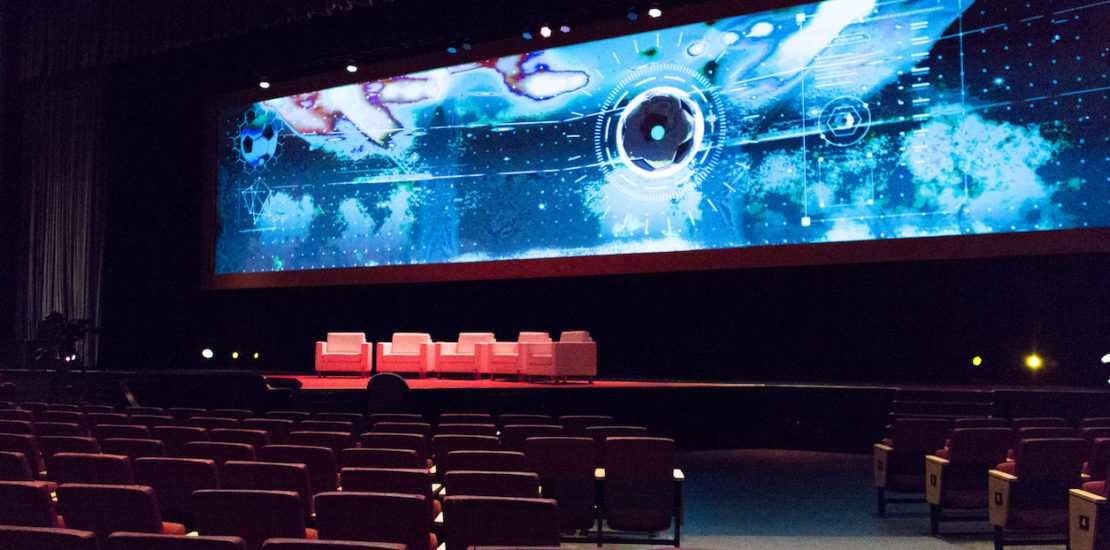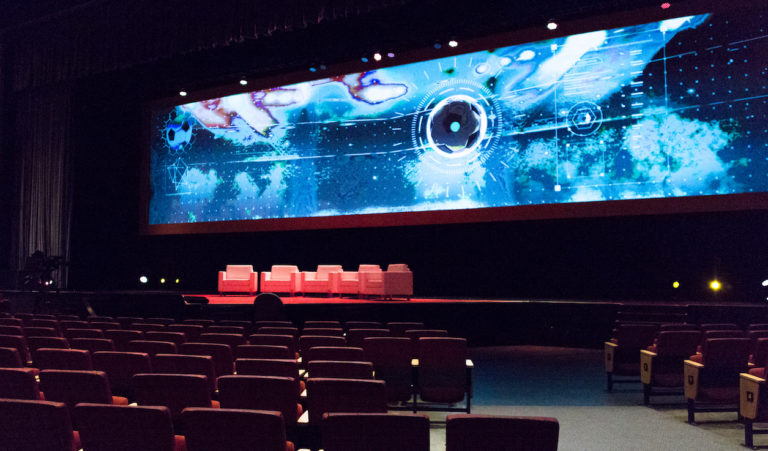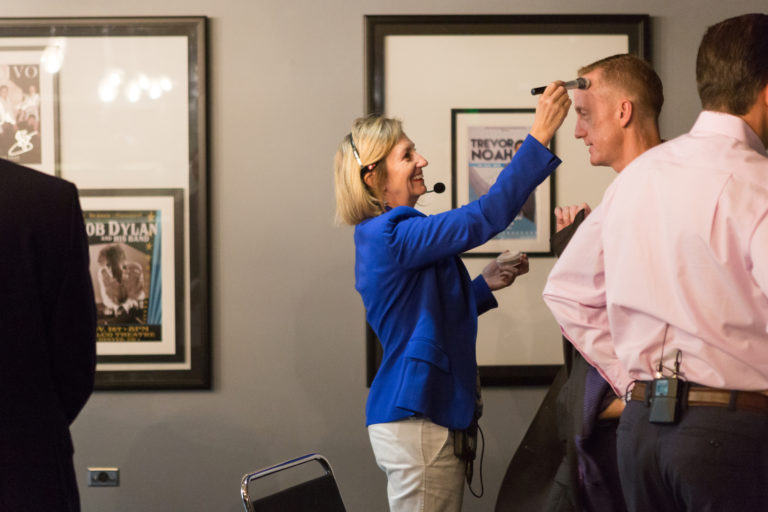Panel Pro Tips: The DO’s and DON’Ts for Awesome Panels

If you’ve been to even a handful of corporate events, we’re willing to bet you’ve sat through your fair share of panels. Some are just mediocre, some are downright bad… but very few panels manage to earn the descriptor of “outstanding”.
This is surprising, since a great panel can be an invaluable addition to a corporate meeting or event. They’re unscripted, make a great platform for engaging debate and when done right, are a launchpad for plenty of audience introspection.
So why are so few any good? Well, that comes down to the mechanics of how a panel is produced (and we don’t just say that because we’re an AV company). No matter how talented panel participants are, AV can make or break a panel… and ultimately an event.
We’ve been a part of planning a lot of panels, and we’re proud to say that through trial and error (and lots of experience), we’ve got producing panels down to a fine art. In our book, sharing is caring, so from these pros to you, here’s our top tips on how to transform your next panel from eh to extraordinary.

Sound + Mics
DON’T have a shared mic.
Here’s a great big don’t we see a lot: having an entire panel share a single wireless handheld mic. Yikes! Though this might seem thrifty and resourceful, what it actually ends up doing is two things you’re best to avoid.
First, it snubs spontaneous interaction. So if a participant wants to jump in on a question, they have to awkwardly request the mic before they can do so. Secondly, it creates a “next man up” scenario, where the mic is simply passed down the line. That’s both boring and predictable – two things you don’t want in your panel.
DON’T mic participants too hastily.
Before you mic up panel participants, keep in mind where they’ll be looking. Lavalier mics are great since they allow for spontaneous interaction, but the rookie mistake is mic’ing a participant on the wrong side.
DO consider where your moderator is sitting.
Before you mic up, consider where your emcee or moderator is sitting. That’s where your participants will likely be looking when speaking, so mic on the side closest to the emcee.
DO make audio a priority.
Audio for panels should never be an afterthought. Work with an AV company that agrees with that belief and you’re more likely to have a panel you’re proud of. Even before you decide on stage furniture or lighting, first figure out your audio game plan with your AV company and you’ll be set up or success.

Visuals + Scenic
DON’T place chairs in a straight line.
Though it seems like a no-brainer to place panel chairs in a straight line, what you should actually do is place these in a shallow arc. Otherwise, participants will be forced to crane their necks to look at other speakers, and it’s likely to lead to some pretty awkward seated positions.
DON’T have background elements that are too busy.
Especially if you are using i-Mag, background imagery can sometimes strain the eye and make it difficult to focus on participants. So, keep the imagery simple, especially at eyeline with panelists.
DON’T use chairs that swivel, lean back or are too deep.
You want your panelists to be comfortable, but you also want them to look professional and presentable to an audience. So, stick with stage furniture that allows for a little comfort without inviting needless distraction.
Avoid chairs that swivel or lean, couches and sofas that participants might “sink” into, and stool that don’t offer any arm or back support for longer panels. Director’s chairs work well because they offer decent back and arm support, but keep a panelist upright and easily seen.
DO consider heights and body types when selecting seats.
Unless you happen to be hosting a panel on cloning, there’s a pretty good chance there’s a combination of heights and body types among your panelists. Consider this when deciding which speaker will sit where.
We suggest putting the largest and/or tallest participant dead center, and then the smallest at the ends. Symmetry is best especially for larger panels with i-Mag, so don’t just leave seating to chance.
DO keep it simple with projection and visuals.
While visuals can be a great addition to other show elements, panels aren’t one of them. It’s fine to have an engaging static image or simple looping background video, but anything more is overkill.
That said, you should include images and names on a screen for larger panels during introductions. That way, an audience knows who’s who during a panel even if they are far away.

Panelists + Prep
DON’T wear light or bright colors on stage.
Whether a panelist is speaking to a small audience or is projected via i-Mag to a large one, there’s one big no-no: bright, busy or light colors in clothing.
Colors like white, light pink, light blue, yellow, pastels or very finely-designed patterns can do a number on the eye. Remind your participants to stick with dark or neutral colors, and if they do wear patterns, keep them large and bold.
DON’T forget to warm up the audience.
You want to get a panel rolling as quickly as possible, but the audience needs a bit of time to adjust and get settled before panelists arrive on stage. Set aside some time for your emcee or moderator to start with a story. This sets the tone, introduces the topic and creates some context even before panelists are introduced on stage.
DON’T allow answers to become too long-winded.
An experienced emcee will know to do this, since it’s important to a panel having a good flow. It’s natural for some answers to become long winded or repetitive – so expect an emcee to curb or even cut off rambling answers should they happen.
This might trigger a bit of a panic response on your part, but just relax – your audience will be glad they did so, and it will keep things moving and everyone engaged.
DON’T avoid controversial questions during panels.
Here’s a hard one for even the most seasoned panelists and event planners: run towards controversial questions, not away. Encourage panelists to face difficult questions head on as best they can. If absolutely necessary, they can simply acknowledge the question and promise an answer down the line.
The worst thing to do is to simply skip the question altogether – not only will this create confusion, but might backfire and lead to a disregarding audience. Here’s an easy way to handle these difficult situations:
“You’ve brought up the elephant in the room, and like you, we’re absolutely focused on this issue. However, for a variety of reasons, I’m just not at liberty to get into this. I know this answer won’t placate you, but know this, I hear you….we’re working on it…and when the time is right, we’ll announce more.”
DO have some makeup handy.
We’re not suggesting you apply a full coat of stage makeup on every one of your participants (unless you’re after a particularly theatrical panel), but a little bit of powder goes a long way.
Spots in the “t-zone” – that’s the forehead, the nose and the chin – are more prone to sweat and moisture that can make an appearance under harsh stage lights. Have a bit of translucent powder or oil-absorbing towelettes on hand for your participants before they take the stage.
DO allow panelists a bit of prep (but not too much).
You want to keep your panel as engaging and unscripted as possible… but it’s a good idea to give your participants at least a little bit of guidance and inspiration on what they’ll be talking about on stage.
While giving some general topics that panelists will be discussing, don’t give them specific questions. Otherwise, you’ll find that panelists have scripted their responses – and that’s a surefire way to kill the engagement.
And no matter what you do, don’t allow panelists to bring written scripts or notes on stage! Their eyes should be up and engaging with other panelists, not buried in a notebook.
DO target questions to particular panelists.
Any experienced emcee will know this cardinal rule, but for those with less experience, this is key. There will always be panelists that are quicker to answer a question than others, so it’s important to direct questions to particular participants to keep things balanced and to keep the conversation going.
That said, it’s okay to allow some riffing on the part of panelists. Emcee’s are there to guide and illicit conversation, not strangle genuine interaction.
DO aim for varied, distinct panelists.
Panels are an opportunity to engage in some friendly debate and introspection – which sometimes is hard to come by in the corporate world. As hard as it might be, try not to use panels as a means of proving a point. Keep panelists varied and distinct.
A wide range of opinions and viewpoints is a crucial ingredient for a successful panel – and there’s nothing more boring than a panel of five talking heads all agreeing with each other. Mix it up!
DO make it easy for audience engagement and participation.
The very best way to keep a panel lively is to include the audience. A great way to make engagement even easier is to include a specialty mic called a CatchBox mic – which can easily be “thrown” to audience members with questions. In a pinch, a “crowd mic” on a stand or a wireless handheld with a runner can also work.
If this isn’t at your disposal, lean on your emcee. They can listen to the question, restate it into their own mic and direct it toward a specific panel member. That way, everyone in the audience and on the panel is on the same page.
There you have it! Our top tips for making your next panel your best yet. Of course, there’s a lot more that goes into a great panel – and a great event – and we’re ready to talk to you about it.
Got questions about your next event’s panel? We’ve got answers! Set up a no-obligations call with us to get started (seriously… we’re great conversationalists).


[…] great panels aren’t easy, but one surefire way to keep the audience in rapt attention is to “unleash the hounds”. Let […]